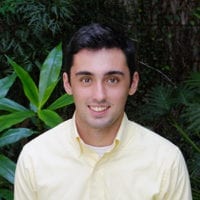
Forward and reverse genetics for determining the genes involved in Rubisco assembly in Sertaria vidiris and Arabidopsis thaliana
Project Summary
The vast majority of plants are C3 plants; they perform photorespiration and create sugars through carbon fixation. Other plants such as maize (Zea mays), are C4 plants. They perform significantly less photorespiration than C3 plants. This is because carbon fixation in C4 plants is much more efficient than carbon fixation in C3. The enzyme responsible for carbon fixation is Rubisco which does not function well in today’s highly oxygenated atmosphere. One solution to having an inefficient enzyme is to artificially create a better or more productive enzyme. Although Rubisco is structurally comparable to cyanobacterial Rubisco, which can be made through in vitro assembly, previous research in the Stern lab found that plant Rubisco cannot be artificially reconstituted due to poor understanding of its assembly pathway. Two genes, RUBISCO ACCUMULATION FACTOR1 (RAF1) and BUNDLE SHEATH DEFECTIVE 2 (BSD2), have been identified as important genes in Rubisco assembly. In order to find more genes, both forward and reverse genetics can be used. Setaria vidiris is a model C4 plant with a rapid life cycle that is simple in its growth requirements. In my project forward genetics was be used with Setaria viridis, to observe mutant phenotypes that have single nucleotide polymorphisms (SNPS). The lab hopes to continue the project by comparing gene sequences of mutant Setaria and wild-typeSetaria and from that, more genes related to the assembly of Rubisco will be found.
My Experience
My time at the Boyce Thompson Institute has been an amazing experience. As a high school student, having the opportunity to participate in experiments in a laboratory is something very new and exciting for me. Learning to perform techniques like PCR and protein gel electrophoresis on DNA that I extracted from plants was a unique experience for someone my age. I am grateful for the opportunity and thank all members of the Stern lab for all their support, especially my mentor Dr. Leila Feiz.
